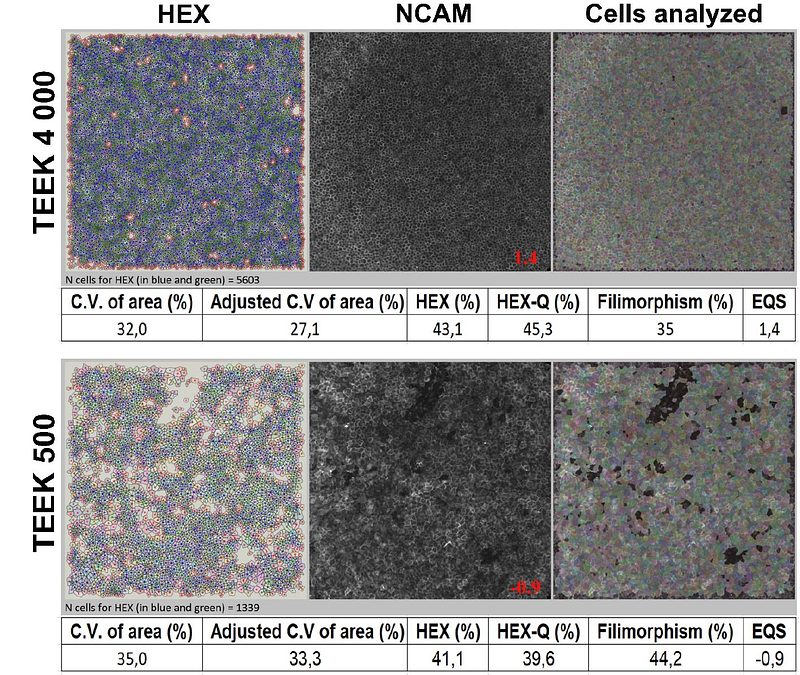Tissue engineered endothelial keratoplasty with controlled endothelial cell density: proof of concept and paving the way for super TEEKs

Tissue engineered endothelial keratoplasty with controlled endothelial cell density: proof of concept and paving the way for super TEEKs
Aouimeur, I.; Coulomb, L.; Fraine, S.; HE, Z.; Bonnet, G.; Sagnial, T.; Travers, G.; XXX, S.; Mauclair, C.; Moisan, A.; Gain, P.; thuret, G.; Corantin, M.
AbstractOver the past 20 years, endothelial keratoplasty procedures have revolutionized the treatment of corneal endothelial disorders. These conditions have now become the leading indication for corneal transplantation in Western countries and account for half of all donor cornea usage. Despite their undeniable success, the global shortage of donor tissues and major disparities between nations justify the development of alternatives to donor grafts. Cell therapy using injections of suspended endothelial cells has proven effective, and tissue-engineered endothelial keratoplasty (TEEK) comprising a membrane coated with cultured endothelial cells is under development to better mimic the native endothelial graft. Our team utilizes a femtosecond-laser-cut lens capsule disc as a bioengineering scaffold, taking advantage of this novel tissue,s biocompatibility, transparency, curvature, and availability. In the present study, we provide proof of concept, in 12 TEEKs, that it is possible to control the final endothelial cell density (ECD) by varying the seeding density per mm2. Cell characterization was performed through morphometric analysis of the endothelial mosaic stained with anti-NCAM (a lateral membrane marker used as a differentiation marker), using the CellPose artificial intelligence algorithm specifically trained for in vitro endothelium segmentation. Five criteria related to pleomorphism, polymorphism, and elongation were combined into a single endothelial quality score. The median cell viability at 28 days of culture, assessed by Hoechst 33342 and Calcein-AM staining, reached 98% (range: 83-99%). The median viable ECD (number of live cells per surface unit) in the highest-density group was 3,245 cells/mm2 (range: 2,778-3,753), paving the way for the bioengineering of supra-physiological TEEKs, or super TEEKs.